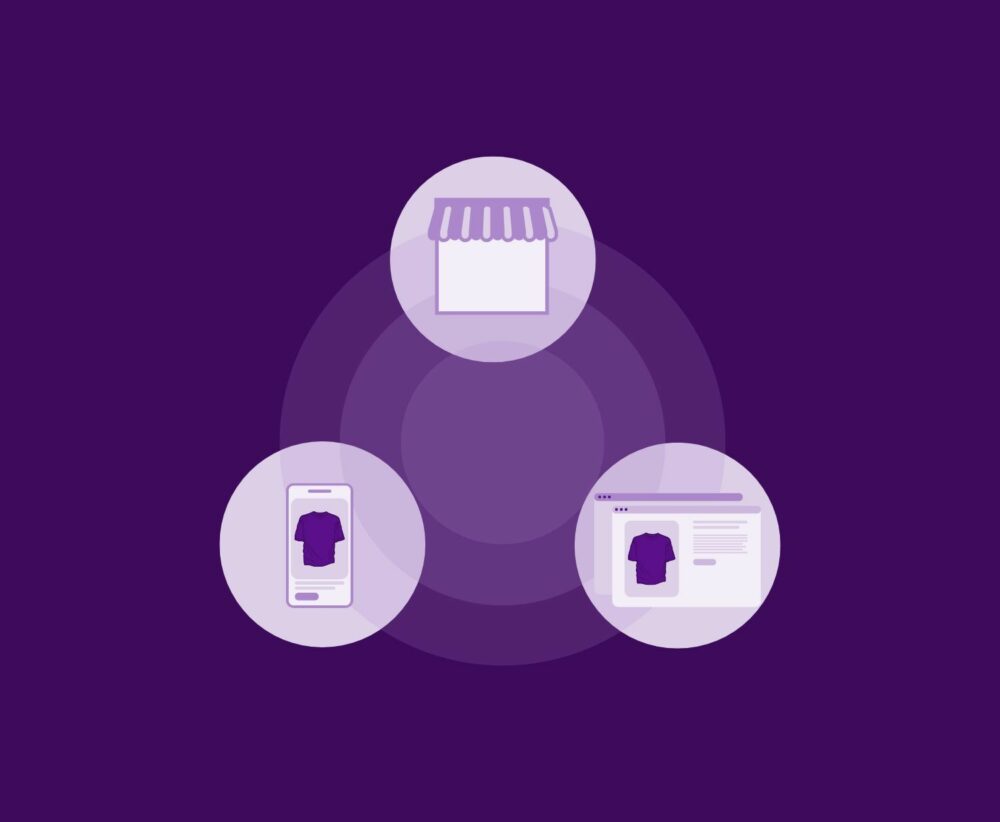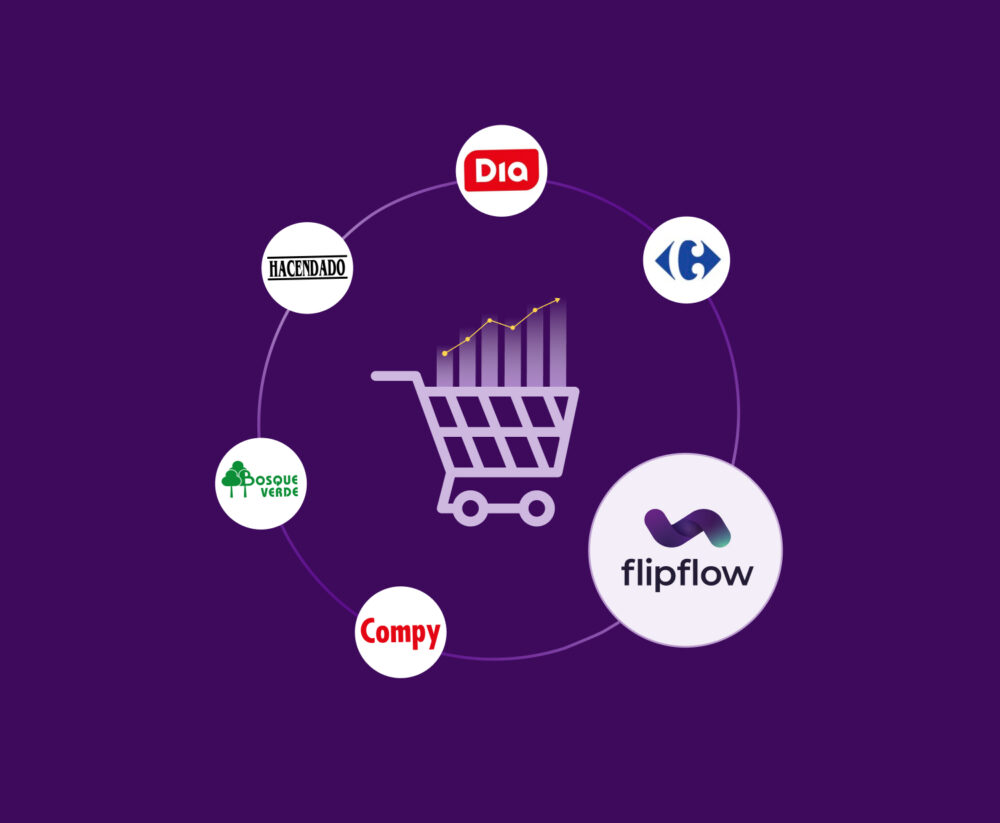The In-Store Retail Media Revolution: Standardising and Measurement of Points of Sale
In-Store Retail Media is transforming the in-store shopping experience, offering new opportunities for brands and retailers. By integrating advertising into physical sales spaces, it allows for the leveraging of specific retail data and connecting with consumers at the point of purchase. This increases the visibility and effectiveness of advertising campaigns. In this context, point-of-sale advertising is changing the game, with investment expected to reach $1 billion in the US by 2028.
With the advancement of Retail Media in stores, the Interactive Advertising Bureau (IAB) has launched a set of guidelines to standardize and facilitate the implementation and measurement of this type of advertising campaign. This article summarizes the main recommendations of the IAB Europe In-Store Retail Media Standardization and Measurement Guide, published in September 2024. It also explains its impact on the industry, the challenges of implementing In-Store campaigns for brands, and what we can expect in the near future.
Context and Definitions of In-Store Retail Media Standards
The concept of In-Store Retail Media refers to the advertising and promotional marketing of a brand or product in a physical retail environment such as a store. Its objective is to influence the consumer at or near the point of purchase. It can be divided between static (traditional) or digital (connected) channels and formats. In this context, retail data is used to plan, execute and measure advertising campaigns that aim to impact the consumer at the precise moment of purchase.
IAB Europe and IAB US, in a joint effort, have designed a framework for In-Store Retail Media, aligning it with out-of-home (DOOH) digital media standards to facilitate the purchase of advertising space globally. This alignment allows brands to manage campaigns in a unified way, reducing operational complexity and optimizing advertising investment across various regions.
To organize and maximize the effectiveness of in-store advertising, IAB classifies the space into five zones:
- Store Exterior: High-traffic areas such as car parks, charging stations, petrol stations or shop windows that can be seen from outside.
- Entrance and Out of Category Areas: Includes security barriers, self-service kiosks and exit areas.
- Checkout: Spaces around the checkout tills, where consumers spend time and are more likely to be receptive to advertising.
- Aisles: Points of exposure in the aisles, near products for sale.
- Other Connected Areas: Spaces such as cafes or customer service within the store.
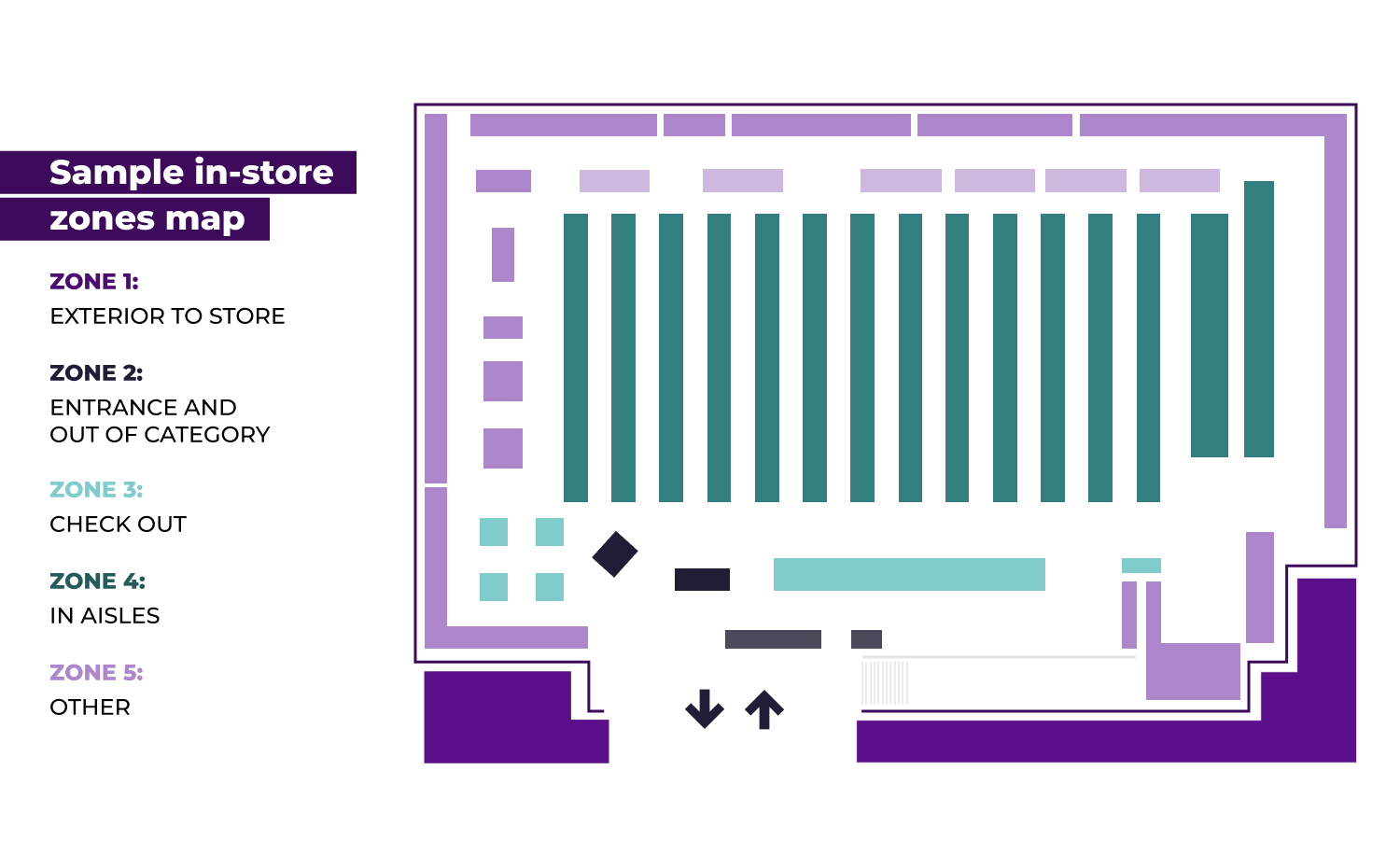
Each of these zones offers specific opportunities to impact the consumer on their journey through the store. This allows brands to design advertising campaigns tailored to each moment and location of the consumer journey.
Advertising Formats in In-Store Retail Media
The versatility of In-Store Retail Media allows for a wide range of advertising formats that can be adapted to different areas of the store. Some examples of effective formats include:
- Digital Screens: Located at strategic points such as aisles and waiting areas, these screens capture customers’ attention and allow for the rotation of multiple advertising messages.
- Interactive Displays: Allow consumer interaction with the ad, providing the opportunity to obtain additional information or discounts in real time.
- Audio Ads: Are especially effective in areas such as entrances, aisles and checkout areas, where shoppers stay longer and are more likely to hear the ad.
- Product Activations (Sampling): In-store activations, such as handing out product samples, offer a direct experience with the brand that can influence purchasing decisions at that moment.
These formats, used in combination, allow for an immersive experience that maximizes exposure and emotional connection between the consumer and the brand in a highly competitive and stimulus-saturated environment.
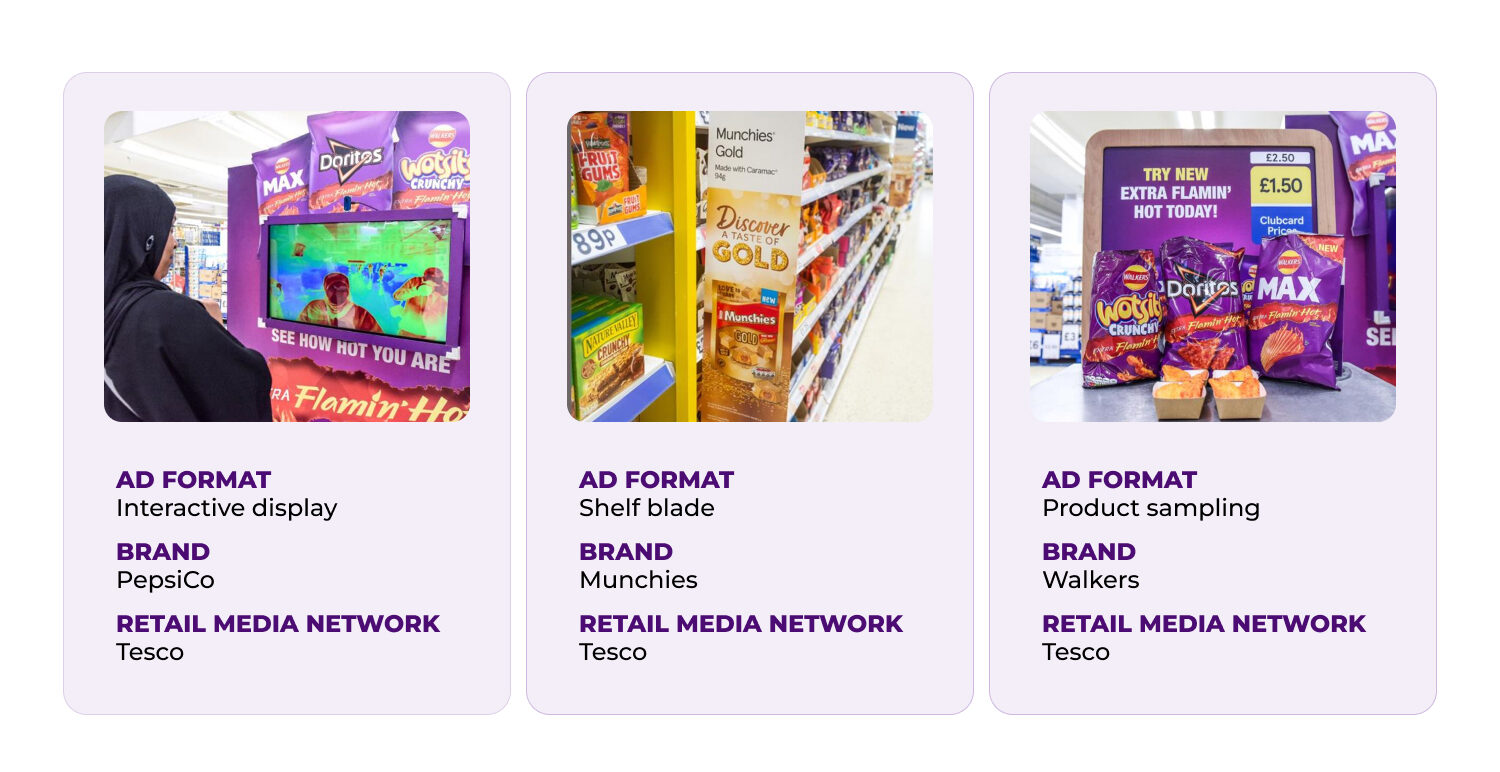
Measurement Metrics in In-Store Retail Media
One of the biggest challenges facing In-Store Retail Media campaigns is the ability to accurately measure their impact. To standardize measurement, IAB Europe defines a series of metrics that are divided into three main categories:
Advertising Metrics
These metrics focus on measuring the impact of advertising exposure:
- Ad Delivery Metrics: These are metrics that measure the advertisement itself. For example, this could be the duration of the ad, the number of times an ad is displayed on a specific screen or format, or the duration of a loop containing a segment of the ad and how many times it is repeated.
- Impressions: The number of people present in the ad’s exposure zone during a given period of time. In any case, this does not guarantee that the ad has been seen by each individual. As a minimum, the Retail Media Networks in charge of In-Store advertising should measure the number of times the ad is played and the estimated gross impressions.
- Opportunity to See (OTS): Estimates how many people could have seen/heard the ad at least once. This is the number of people who have passed by the in-store activation and could have seen or heard it. In this case, the word “opportunity” is key, as it doesn’t confirm that consumers have actually seen or heard the ad, only that they have had the opportunity to be exposed to it.
Traffic and Exposure Metrics
These are indicators of consumer behaviour in the store and the time they spend in areas near the ads:
- In-Store Traffic: Total number of shoppers in different areas of the store, measured to identify moments and locations with higher foot traffic.
- Dwell Time: Average time shoppers spend in an area where they can see or interact with the ad.
- Exposure Zone: Specific areas in the store where shoppers have the opportunity to see or hear the ad, calculating their potential exposure.
Sales Measurement Metrics
These metrics are focused on evaluating the campaign’s impact on sales:
- Sales Variance: Compares the sales of specific products before, during and after the campaign to determine its effectiveness.
- Incremental Sales: Measures the campaign’s impact using methodologies such as Test vs Control, which compares sales in stores that ran the campaign with control stores without the campaign.
- New to Brand or Category: Identifies consumers who purchased a product or brand for the first time as a result of the campaign, a valuable metric for measuring the acquisition of new customers.
These metrics, when implemented properly, allow brands to analyze their campaigns’ performance in detail and make adjustments based on real-time data. This optimizes the advertising strategy based on consumer behavior within the store.
Challenges in Implementing In-Store Retail Media Campaigns
The effective implementation of In-Store Retail Media campaigns is not without its challenges. These include the need for precise measurement mentioned in the previous section, compliance with privacy regulations and the ability to adapt campaigns in real time.
Here are some of the main challenges and best practices recommended by IAB:
Campaign Optimization and Personalization
The ability to adjust campaign elements (such as frequency and content) in real time through multivariate testing is essential for maximizing impact. It allows brands to tailor their messages based on data and consumer behavior within the store. This approach makes the campaign more relevant and effective.
Format and Location Selection
Ad placement and format must be adapted to the shopping journey. For example, screens in checkout areas tend to be more effective for impulse purchase products. On the other hand, displays in aisles or service areas can capture customers’ attention at times of less urgency.
Transparency in Measurement
IAB recommends that retailers and Retail Media Networks openly share data collection methods for traffic and how impression metrics are calculated. This fosters trust and allows for a more accurate assessment of campaign impact.
Adapting to Privacy Regulations
Given the use of advanced tracking technologies such as sensors and beacons, it is crucial that campaigns align with privacy regulations, such as GDPR in Europe. Brands must ensure that customers’ personal data is anonymized and managed securely to avoid privacy risks.
Regarding campaign measurement, which, as we have explained, is the biggest challenge brands may face, flipflow can provide a solution:
Retail Media Data Analysis
Thanks to this tool, you can analyze the performance of your campaigns in a cross-channel way from a single control panel where all your information will be centralized. By integrating your Retail Media data into our platform, you will obtain a number of benefits that will make a difference in how you analyze and optimize your advertising campaigns. You will be able to:
- Maximize the efficiency of your campaigns thanks to the cross-referencing of your internal performance data with other market data offered by our platform.
- Optimize your campaigns to maximize their ROI, correlating them with shelf data (such as out-of-stocks or gaps in your assortment) and checking in real time what your competitors are doing.
- Obtain personalized reports for each member of your team and build better collaboration within the company.
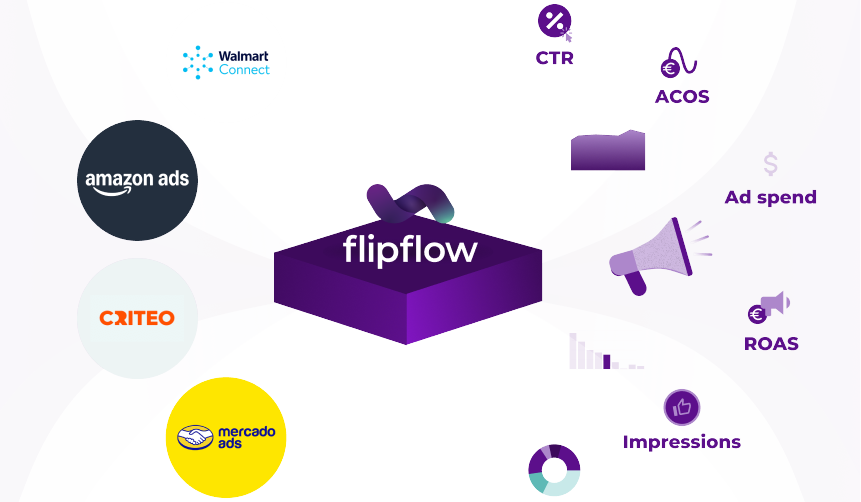
All these possibilities make flipflow an unbeatable tool when it comes to improving the implementation of your Retail Media In-Store campaigns.
The Importance of Investing in In-Store Retail Media for the FMCG Sector
In the dynamic fast-moving consumer goods (FMCG) sector, it is estimated that around 90% of purchases globally are still made in physical stores. Physical points of sale remain highly relevant for these products.
Investing in In-Store Retail Media is crucial for connecting with consumers at the precise moment of purchase, because this channel capitalises on the continuous flow of customers in stores and allows for direct interaction with shoppers, capturing their attention through visual and auditory formats.
On the other hand, it shouldn’t be forgotten that the online environment is still a showcase that largely affects the physical world. Although online FMCG purchases don’t amount to more than 10%, the correspondence between assortments, promotions and prices can reach 98% between the two worlds. If you’re interested, you can find out more about this correspondence in our Grupo Lala case study, a Mexican dairy company.
We must be aware that the data provided by tools that analyze digital Retail Media, both online and offline, are capable of going further and giving us reliable information about In-Store Retail Media as well. You need to monitor and review the performance of the digital channel to avoid neglecting your brand’s success on any front.
The Future of In-Store Retail Media and its Opportunities for Brands
With the continued transformation of retail and increased investment, In-Store Retail Media represents one of the greatest opportunities to connect brands with consumers. We are in a context that combines the digital shopping experience with physical interaction, and this must be leveraged.
With the proper use of metrics and the standards proposed by IAB, retailers and brands will benefit from more precise measurement. As well as the ability to personalize their campaigns based on specific consumer behaviours.
In the current context, where consumers demand a personalized and relevant experience, In-Store Retail Media emerges as a fundamental tool for brands to connect effectively and meaningfully with their customers.

